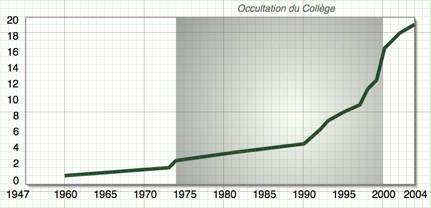DrunkenBoat: In his work Gestes et opinions du docteur Faustroll, pataphysicien, Alfred Jarry gives the following definition: “’Pataphysics is the science of imaginary solutions.” What relation do you see between the Oulipian version of potentiality and ’pataphysics?
Milie von Bariter: Being limitlessness itself, ’Pataphysics also encompasses Ou-x-pian works. In addition, the relationship of potentiality and ‘Pataphysics is both frequent and assiduous: the “potential” at stake in each Workshop of X Potential corresponds to one type of “imaginary solution.”
DB: How might we imagine their similarities and differences?
MvB: Ou-x-pian works do not just lead to any imaginary solution, but rather to solutions in the domain of the possible. These solutions may not always be realized but could be realizable under certain conditions. The word “potential” must be understood in terms of “realizable if one follows certain pre-established rules.” All imaginary solutions are thus not necessarily potential, whereas each potential solution is certainly imaginary.
DB: How has the evolution in the two groups’ activities since 1960 affected a confluence of divergence in ‘Pataphysical thought and that of potentiality?
MvB: If one were to assume the existence of a generalized thinking, the “thought” of potentiality would be included in ‘Pataphysical thought. In truth, in ‘Pataphysics, every thought is exceptional and each workshop is equally exceptional and independent. There are not, therefore, “two groups since 1960,” but rather a multitude of experiments undertaken in parallel and with many intersections. Oulipian experimentation began in 1960 under the roof of the Collège de ‘Pataphysique, it then established its independence from the Administration du Collège. Nonetheless, a majority of the members in each ou-x-po are also members of the Collège. In the beginning, each members of the Oulipo held the rank of “datary” in the Collège, but little by little, non-pataphysicians were co-opted. Such mixing is a rule in each workshop. I’ll give an English speaking example: Stanley Chapman is Vice-Rogateur of the Collège and founding member of the Outrapo, however, Tom Stoppard, another member of the Outrapo, is not part of the Collège de ‘Pataphysique …
DB: To what extent, in your opinion, do the diverse ou-x-pos and the Collège share parallel or divergent futures?
MvB: Some time ago I put together a graph illustrating how the Occultation and the Disoccultation of the Collège influenced the curve in the birth of the ou-x-pos.…

It is clear that Occultation provokes ou-x-pian creative desires and that Disoccultation slightly hinders that phenomenon.
This addresses the past rather than the future of the Collège or the ou-x-pos, but ever since the Collège’s Disoccultation there has been a consistent increase in collaboration, and often on the initiative of the Collège. One may therefore predict that in the future the Collège will be as interested in the activities of Ou-x-pians.
DB: What type of coordination currently exists among the diverse Ou-x-pos? In his book, La Bibliothèque de Warburg, Jacques Roubaud evokes François Le Lionnais’s ambition, that of a “Universal Institute of Potentiality” which would unite the amalgam of the Ou (ou- (ou- … X … -po) -po) Po; is there currently a consortium being formed in order to modestly work toward that real dream over the years to come?
MvB: The key to inter-ouvroir organization is evidently inscribed in the directions that François Le Lionnais gave, quite precisely on page 17 of the 30th Bibliothèque Oulipienne.
François Le Lionnais, without whom the Ou-x-po would not be what it is, places the word “horizon” in the direction of the x, the unknown that reigns at the center of the Ou-x-po (no, he did not want to found an Ouhorizonpo, first because he would have only used one syllable per word, thus Ouhorpo and, what’s more, horizon is masculine and the x in every ouvroir is feminine). If the x points “to the horizon,” it is not so much a place to be reached as it is an ideal toward which we must tend. The Ou-x-po is a principle, a system of creativity under voluntarily imposed constraints, and its concretization becomes real in the existing ouvroirs, or in those yet to come.
Noël Arnaud stayed the course in becoming President of the Oulipo and in presiding over the destinies of the ouvroirs as an ensemble. Each new ouvroir made a point of obtaining Noël Arnaud’s blessing in creating a new avatar of the Ou-x-po.
At its Disoccultation, the Collège created the office of “Coadjuteur du potentiel.” This coadjutery centralizes, within the Collège, information concerning the diverse ouvroirs. It also administratively organizes inter-ouvroir events potentially occasioned by trans-ouvroir constraints. The first great manifestation of the Ouxpo took place under the aegis of tipi at the Centre Pompidou shortly before the Disoccultation (10 May, 1999); the last Gathering to date was published in the 19th Carnet du Collège de ‘Pataphysique (15 March, 2005).
My role as Provéditeur Coadjuteur du Potentiel, if I am to coordinate the ouvroirs, consists in researching the contact information for the Ou-x-pos, keeping them current, and, from time to time, working to facilitate the materialization of infinite potentiality in the collaborations between the ouvroirs.
(July 2006)